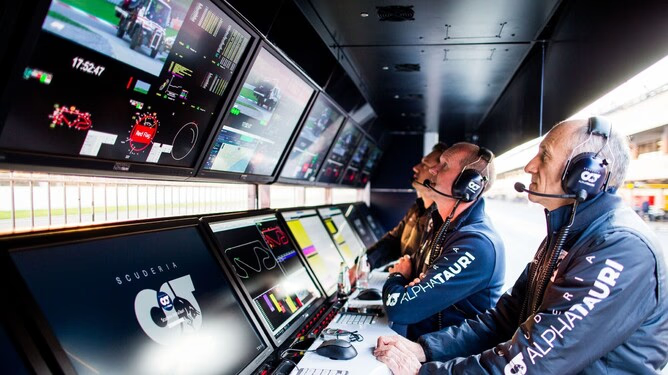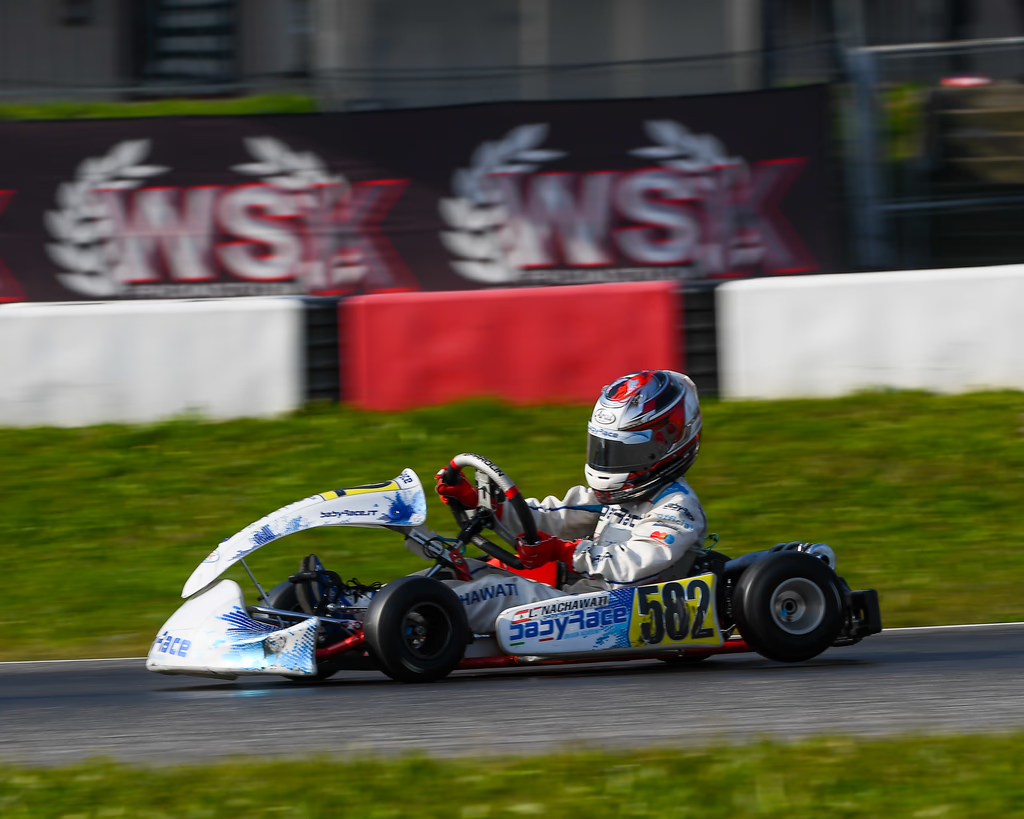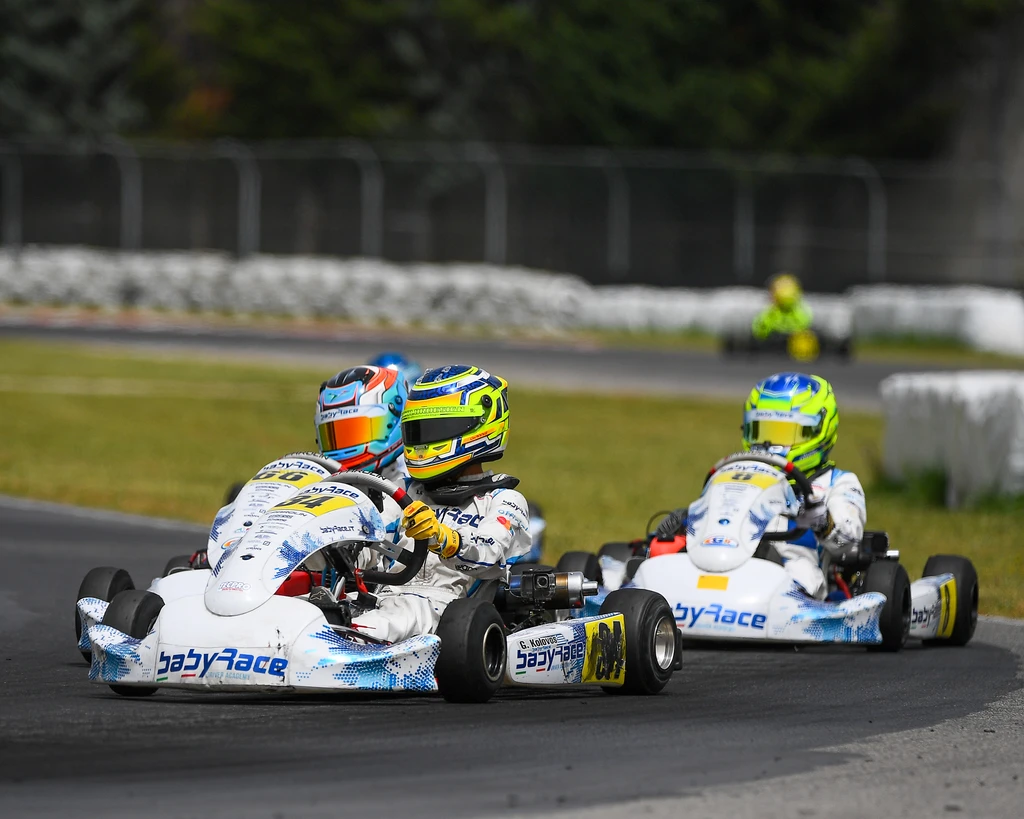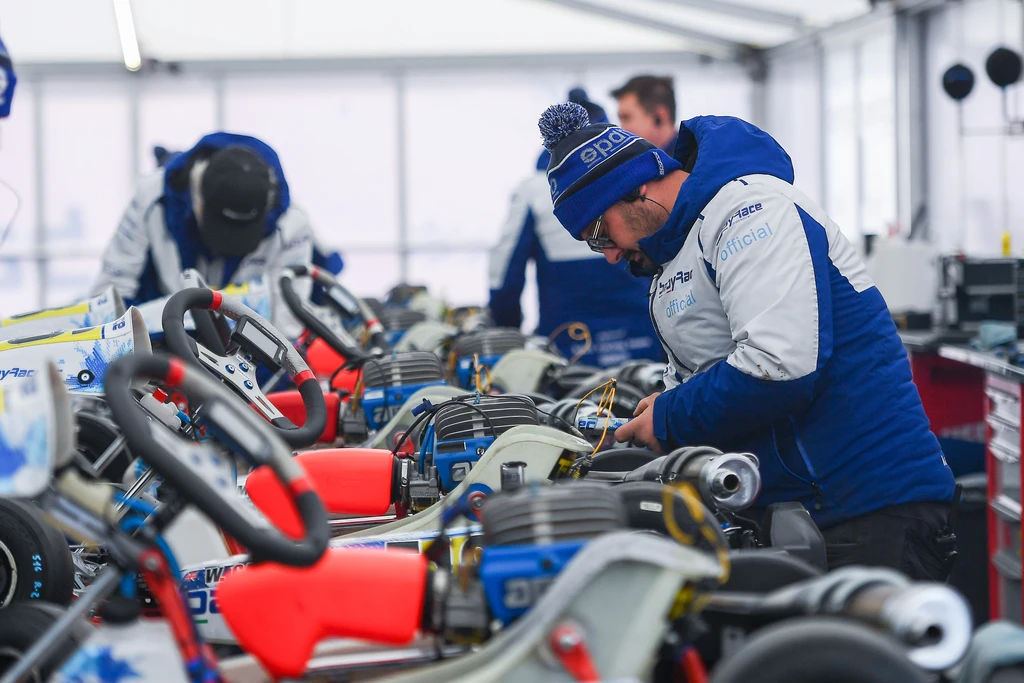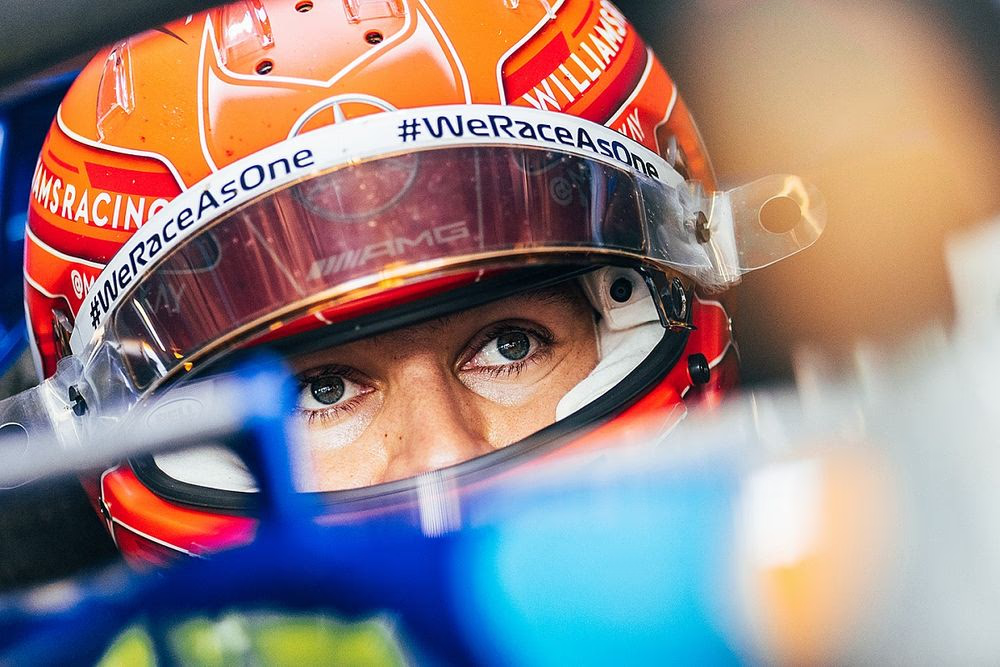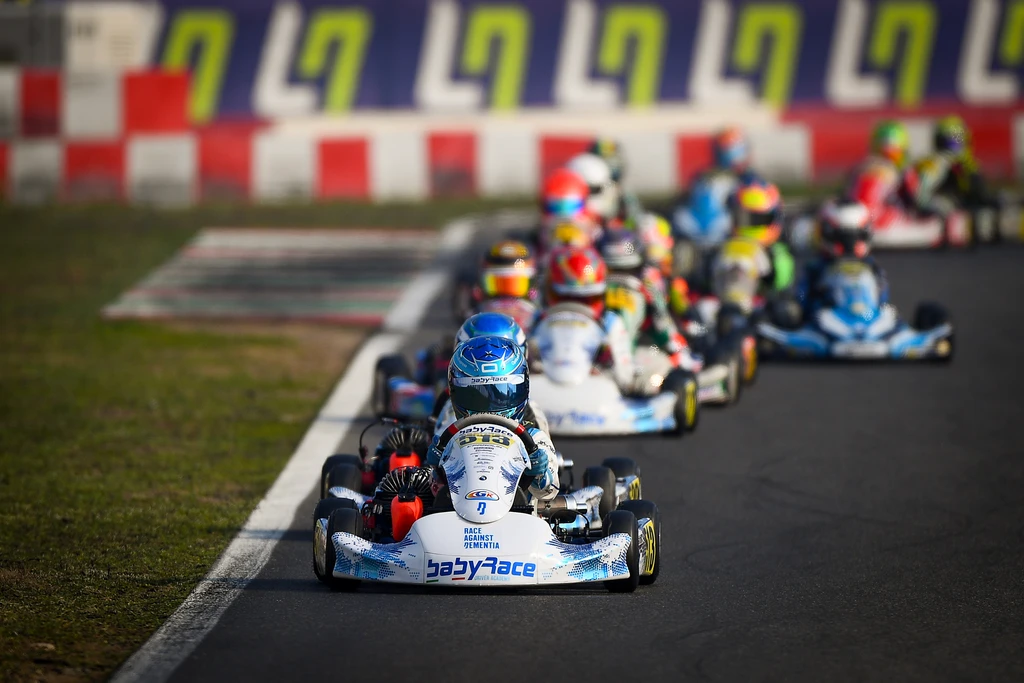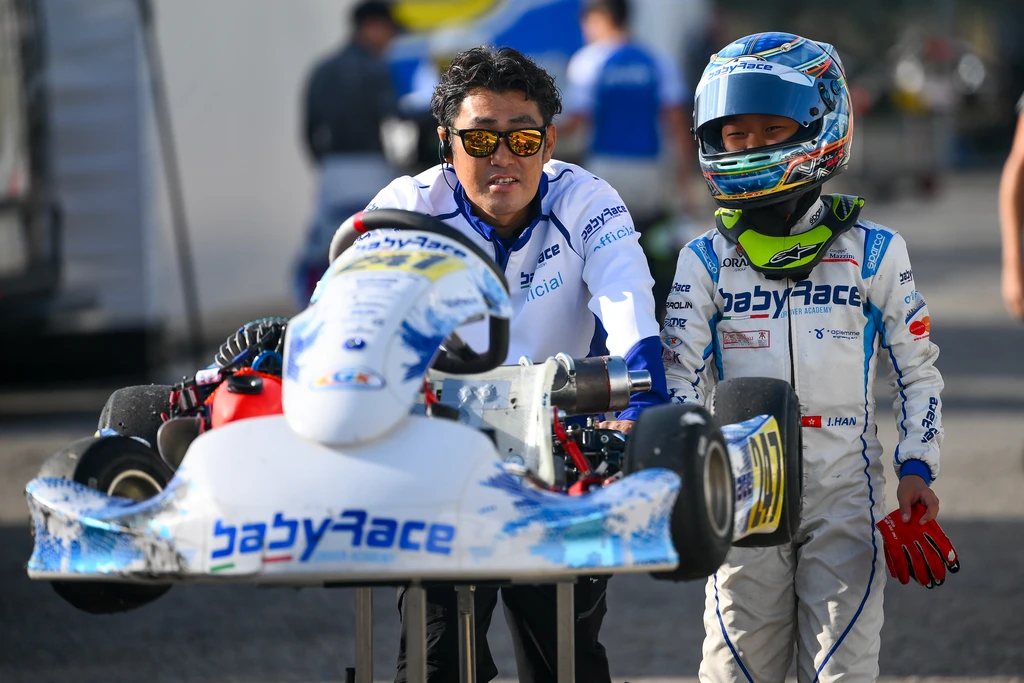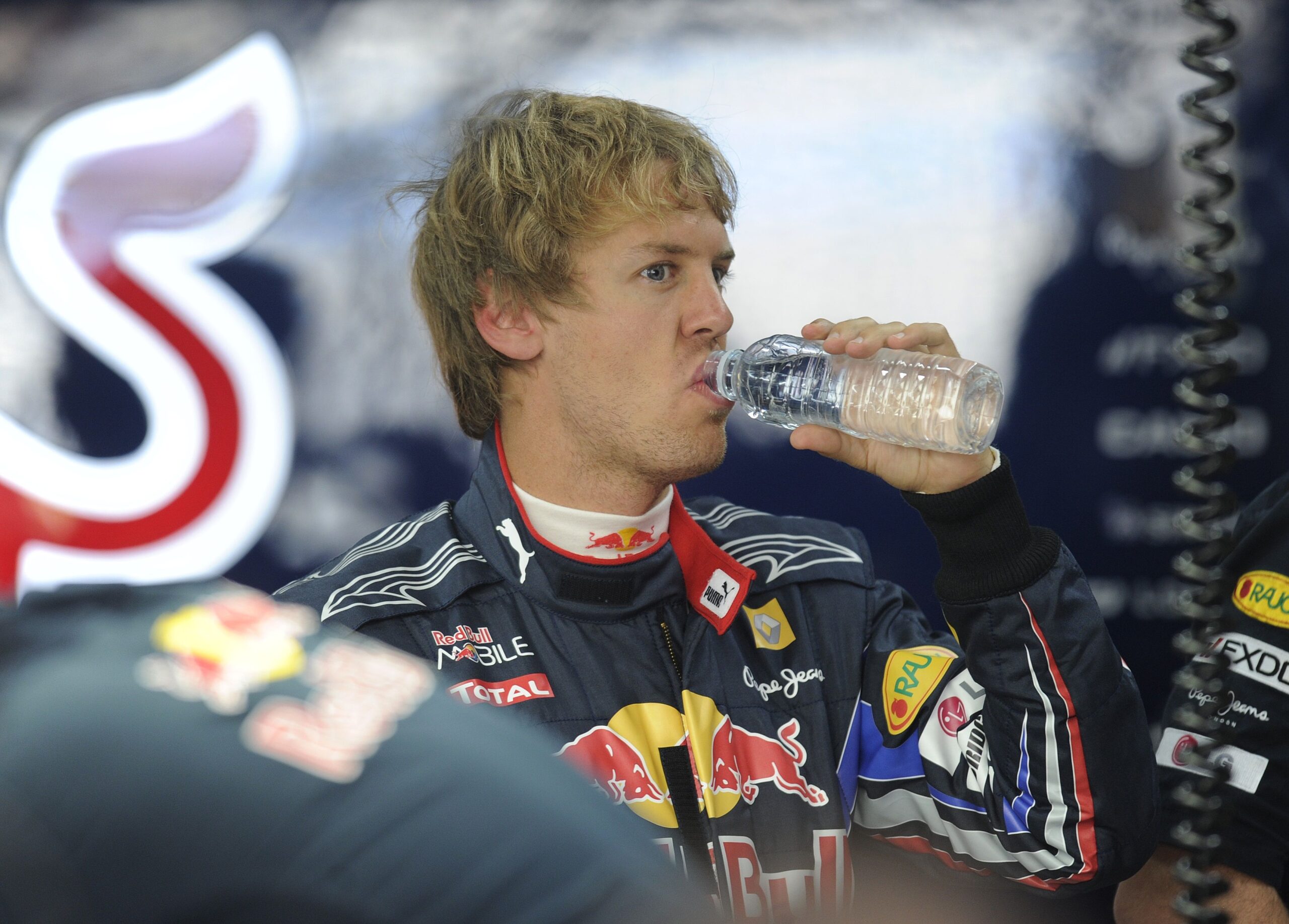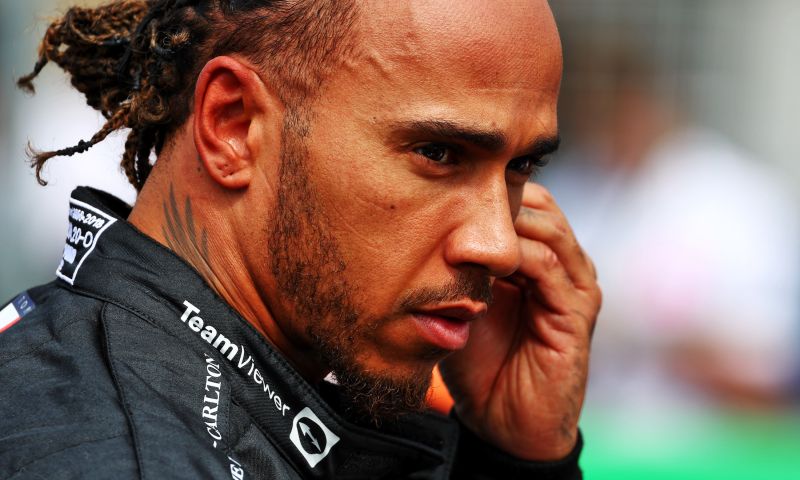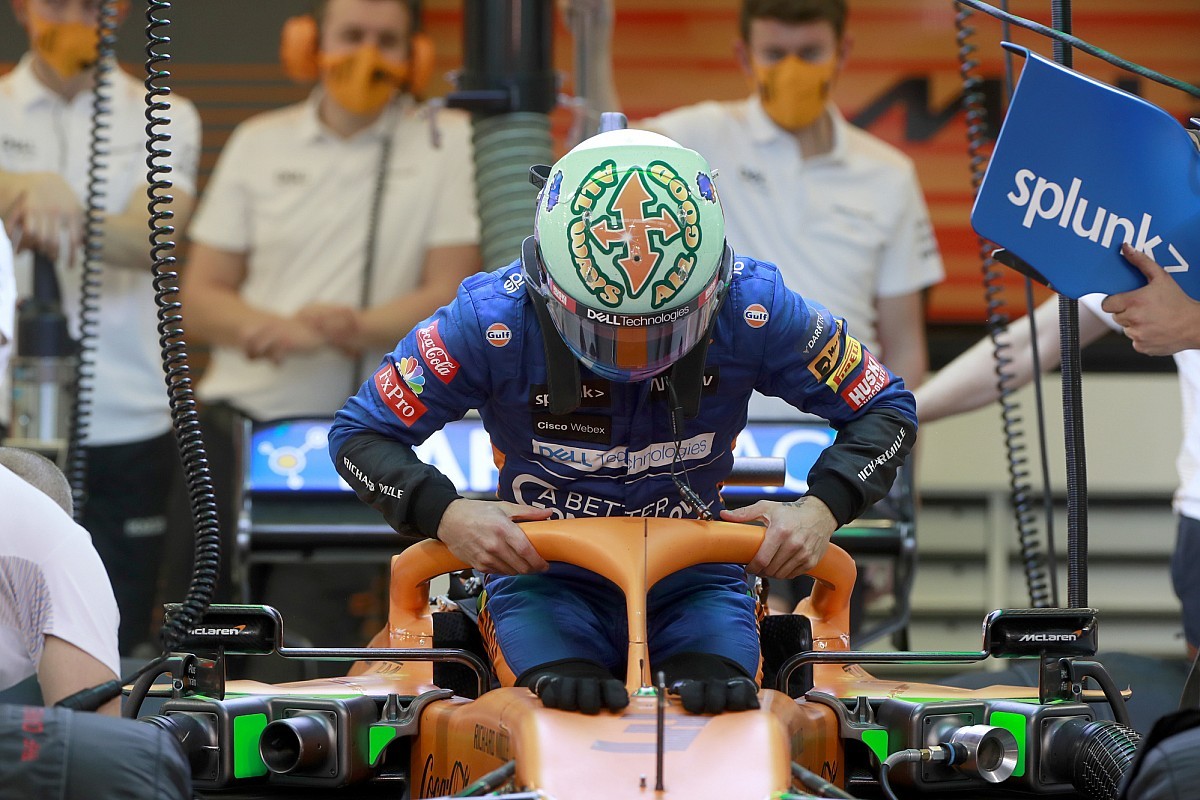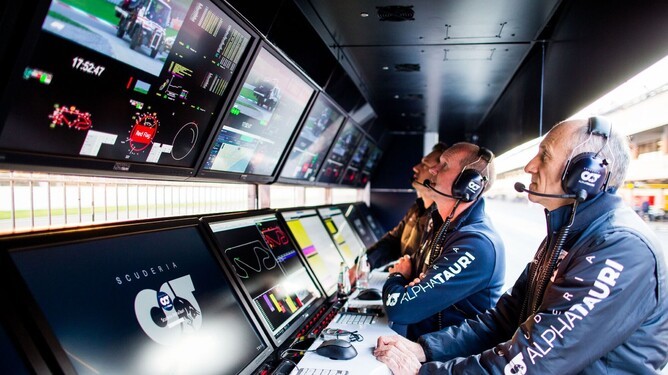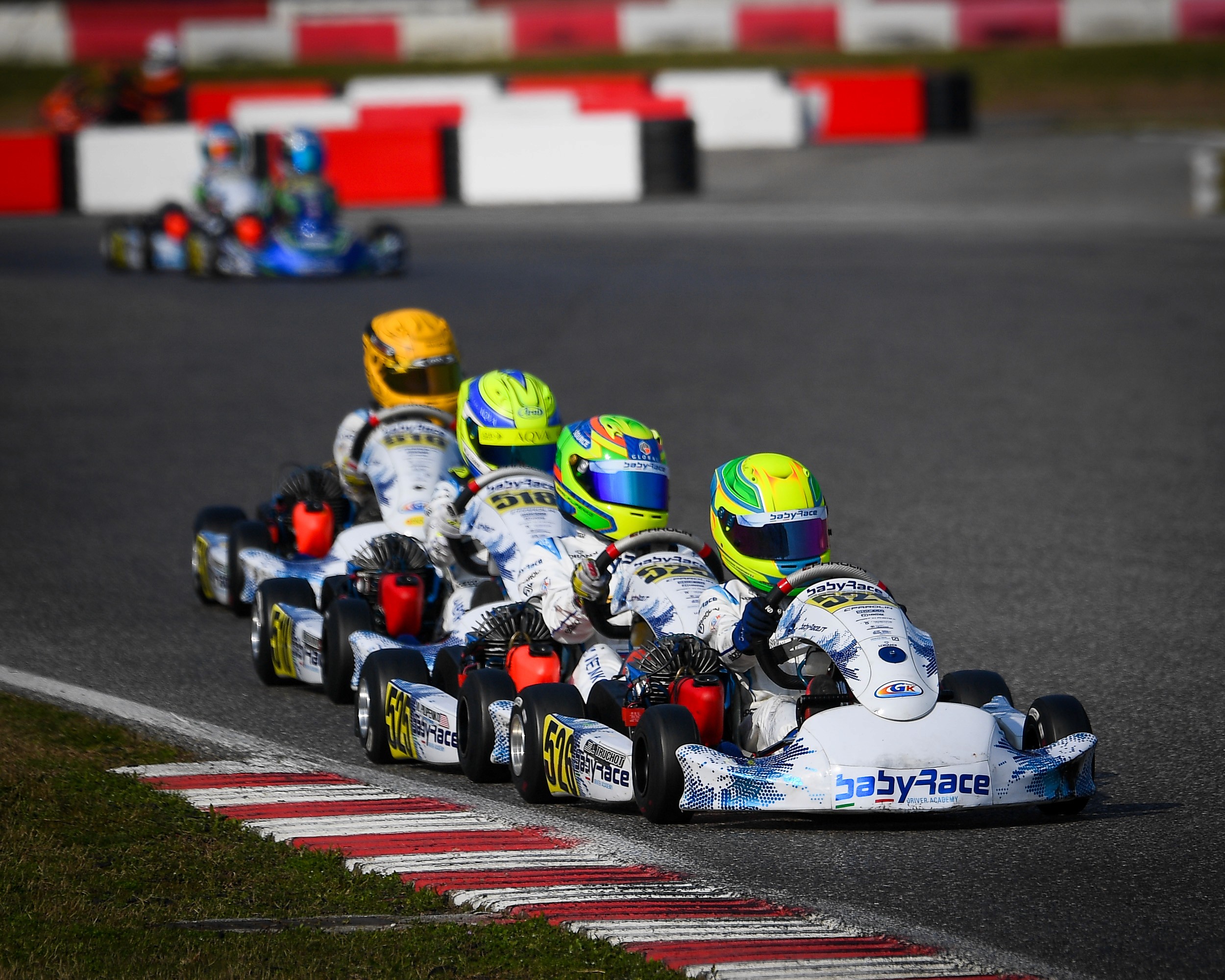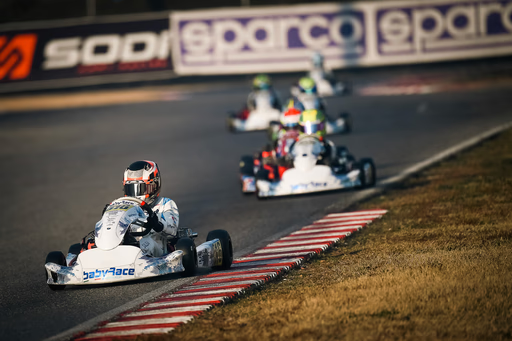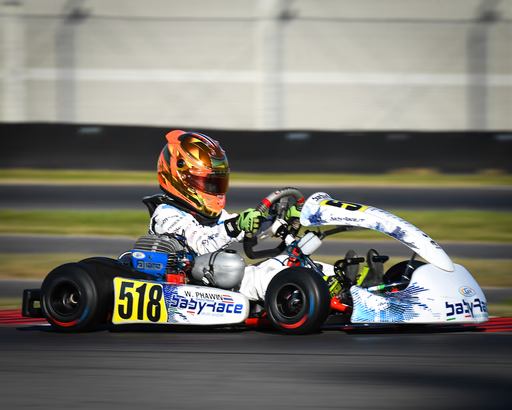You’ve probably heard people talk about trail braking on YouTube or in some forum where everyone’s trying to sound like an F1 engineer.
But let’s cut through the noise, trail braking really isn’t that complicated.
In fact, it’s just late braking… and keeping a bit of brake pressure as you enter the corner. That’s it.
Nothing magical. Nothing to overthink.
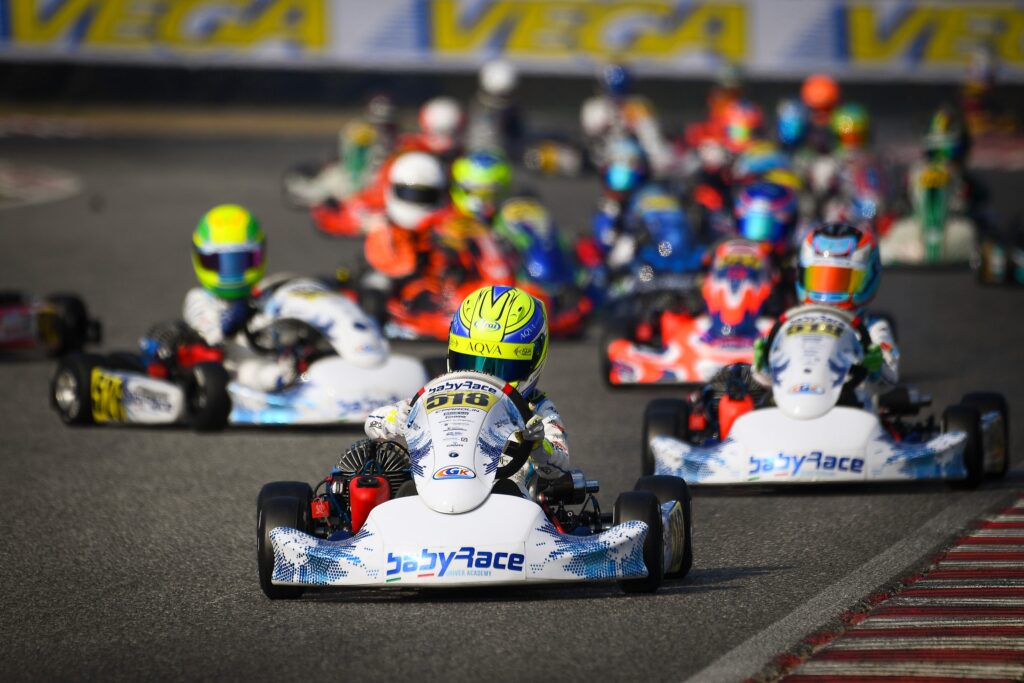
What Trail Braking Actually Means
Trail braking just means braking so late that you’ve got no choice but to hold the brake into the corner.
You’re not smashing the brakes and immediately jumping off them.
That’s what rookies do, and the kart won’t behave that well.
It won’t stop properly first of all, and then you’ll induce some understeer which won’t allow you to get the rotation needed to get a good mid-exit.
You’re keeping some pressure going — trailing it into the apex — so the kart keeps slowing down all the way until the turning is done.
The goal is simple: your minimum speed should happen right at the apex, not before.
If it happens too early, that means you braked too early. And you’ll feel it on track. You’ll feel slow. Very slow.
And that’s why the following mistakes comes is a too early throttle pick up, due to the fact you feel too slow in to the corner, and that in turns gives you an even worse exit.
You could’ve gone deeper, pushed harder. That’s the part most people miss.
So again: trail braking = braking late AND holding some brake into the final entry phase of the corner.
That’s when you’ll truly be feeling on the limit.
And that’s what separates the okay laps from the great ones.
Why It Works So Well
Here’s the key thing: when you carry brake pressure into the corner, you shift the weight of the kart forward.
That gives you more front grip. You’ll feel it more in formula cars with all the aero and rake, but in karting, it’s still noticeable.
Just a small bit of brake — even 2% or 3% — can keep the front end more planted.
The nose dips a little, the front tires bite harder, and you can rotate better.
You’ll hit the apex sharper and carry more momentum out.
Don’t Overthink It — Just Brake Late
Here’s my advice: don’t get caught up trying to be perfect with “trail braking technique.”
Really, don’t overthink it.
Just go out and brake as late as you can.
If you brake late, you’ll naturally have to hold the brakes longer — otherwise, you’ll fly off the track.
So trail braking kinda happens on its own when you push your braking zones deeper.
What you don’t want is to brake late and then release the pedal too fast — because then you’ll overshoot the apex.
That’s when you miss the corner and end up wide, or worse, off in the grass.
So instead, brake late… hold the pedal a little longer as you enter… and aim to hit minimum speed at the apex.
Simple as that.
Final Thoughts
Trail braking isn’t some fancy trick reserved for top-level drivers.
It’s just efficient, aggressive braking. And when you do it right, it’ll help you rotate better, stay tighter, and carry more speed through the corners.
So go out and try it. Brake deeper. Trust the kart. Feel how it reacts.
Don’t be afraid to push, and don’t overcomplicate it.
You’ll get it. Just practice.
Just Senndit
– Alessio

